Training & Traveling for
Multi-Day Endurance Rides
We know it is no easy feat completing a multi-day endurance ride in the first place, but to get to the point where both you and your horse feel good after the finish? That's a huge accomplishment!
Multi-days may feel very intimidating to those who are newer to the world of endurance riding; therefore, we've partnered with Riding Warehouse-sponsored rider Natalie Law to gather information from her personal experience of finishing numerous endurance rides, multi-days included. As an avid endurance rider and trail explorer, Natalie offers great tips for endurance training and riding, including what to bring and how to prepare properly. Follow along in this Q&A article as Natalie shares her insight!
Meet Natalie Law
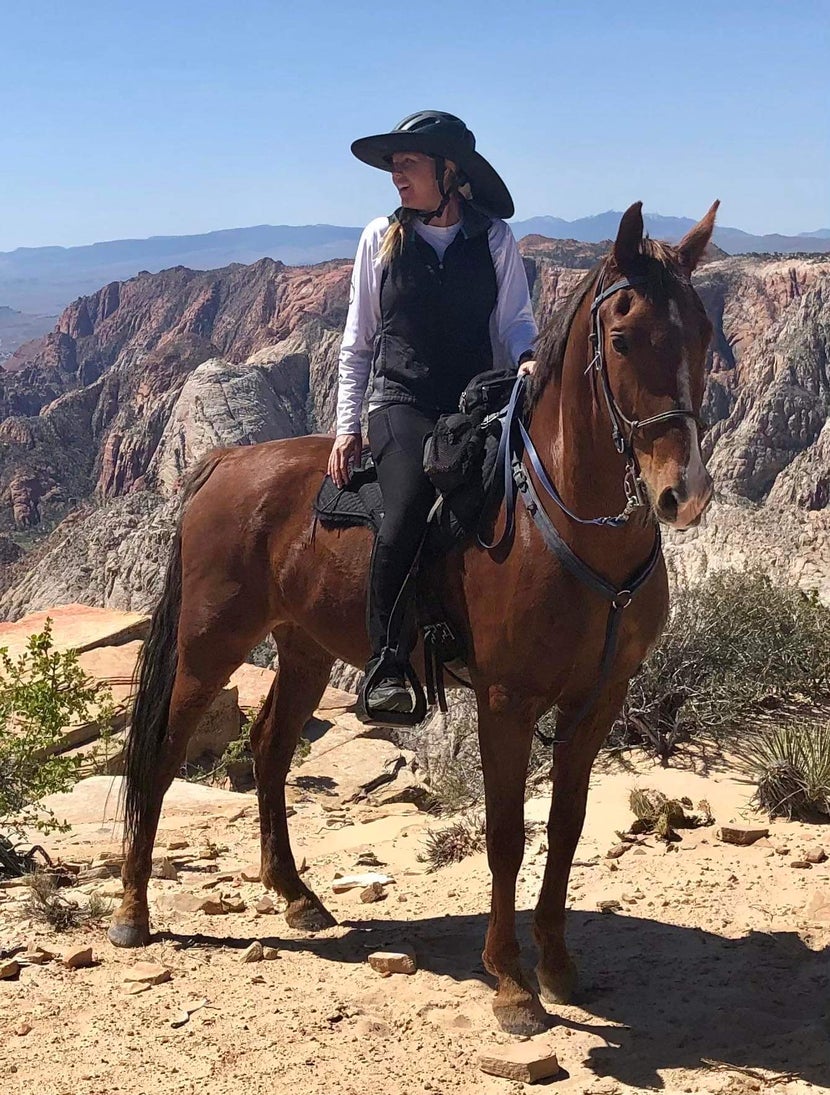
I have close to 2,000 endurance miles spread over numerous organizations, and every ride started with, "That looks kinda fun, I think I want to do that." I primarily ride 50-milers, but I have two 100-mile completions under my belt—including Tevis. I live in the Mountain Region of Utah where multi-day rides seem to be abundant, so I naturally wanted to get my money's worth at every ride possible. I initially didn't know how to compete in endurance, so I started watching others who were successful and began learning from them.
Getting Started & Challenges
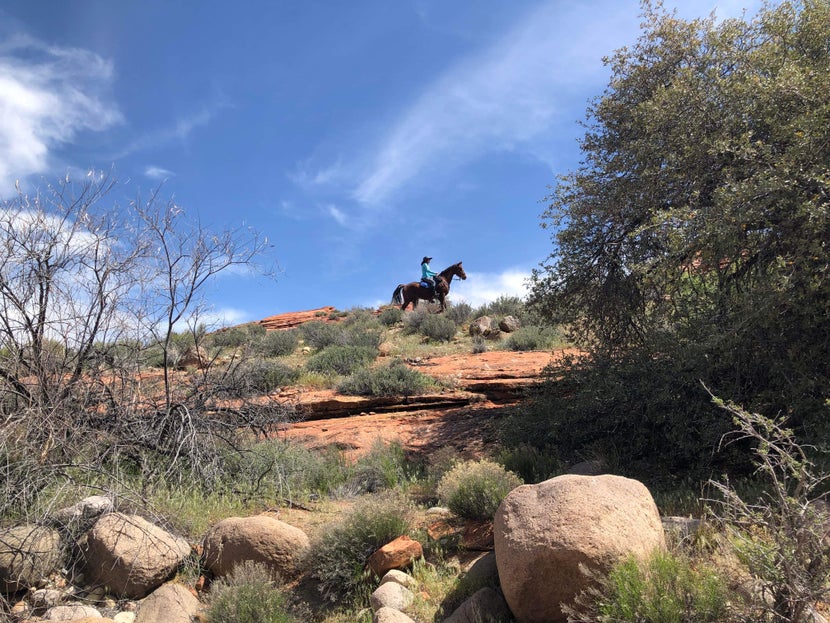
Q: How did you get started in endurance riding and multi-day rides?
A: I was living in Washington state at the time, and I owned my first horse as an adult. She was a very "hot" American Saddlebred, and it was my first time working with horses in about 20 years. I would ride with my husband's aunt who lived just down the road; she introduced me to endurance, and it took a good year or two before I started to truly understand the whole endurance world.
Multi-day rides are an experience at an entirely different level. First, for those who are tempted to flip right past this article because you'd "never do a multi-day ride," hear me out. There was a time, not even that long ago, when I was so proud I rode 7 miles! I am not just speaking to the ultra-mega endurance riders; I'm talking to all those that love their horses and being out on the trails with them. Multi-days don't happen overnight, and neither do 25- or 50-mile rides. All of them take dreaming, learning, strengthening, and some failures along the way.
Q: What were some of your biggest learning hurdles?
A: One of the greatest things I've learned from others is that at some point, you have to take a chance. When you first move from a LD (limited distance) to a 50-mile, there is a worry of "am I ready" that only strengthens when you add more riding days. I've learned you have to truly put the work into your horse and yourself to feel prepared to step up to the next level. That means working toward successfully completing single-day rides to build a horse that is truly "fit to continue" when it finishes the ride. When you look into the horse's eyes, and they still sparkle with a desire to keep going, this comes from the emotional and physical strength of both you and your horse!
Stepping up to another level in endurance almost always comes with failure, also known as education. Be honest with yourself and your horse. Did you both truly finish the ride well, or did you just inch by? If your horse had struggles physically or metabolically, acknowledge those things and seek help. I once had a horse that did phenomenal on 50s and finished with great vet scores, but then would struggle in the evening. I didn't step her up to multi-days until we worked out all the kinks—even though to the general public, she looked more than ready. Endurance has a plethora of people with knowledge and experience. Ask questions! Chances are you're not the only one who has encountered the problem.
In endurance, the learning never stops. I've done a couple 100-milers, plenty of 50s and multi-days, and I still come home from each ride with something new to work on. In the very beginning, my learning hurdle was riding balanced and posting the trot on correct diagonals. Now the learning tends to be geared more toward each individual horse, whether it's learning their metabolics or developing individualized physical training regimens. I'm constantly reading, asking, and searching for understanding!
Conditioning & Endurance Horse Care
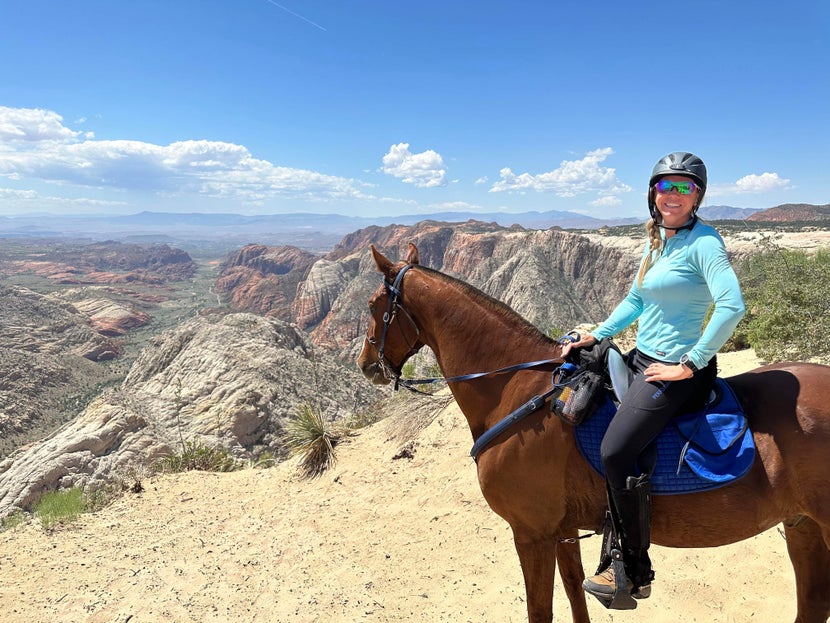
Q: How do you generally condition your horses for multi-day endurance rides?
A: I feel that conditioning for multi-days is a bit different than conditioning for a 50-mile ride, because you're generally working with a horse that has been in endurance for at least a season or two. It needs to be understood that I am not a "racer." I go to each ride with the goal to finish strong. While we sometimes just manage to squeak our way to the front, most of the time we're out there to simply have a good time and enjoy the trails. For that reason, my training is geared more toward this style of endurance. Once I have a horse that has done multiple one-day 50s, that is when we start working toward multi-days.
I live in Southern Utah, and we have a variety of terrain to condition on. In reality, I do very little speed training and instead focus on strength training. Most of my riding is between 7 and 12 miles; I do a lot of steep climbing and teach my horses how to use their rear end. The trails I traverse vary from 3,500 to 10,000 ft in elevation, so it is not hard to do some intense work at slow speeds. I'm also surrounded by red desert sand that builds muscle at low impact and slow speeds. With all of this, I usually ride my multi-day horses 2 or 3 times per week. Maybe 1 or 2 times per month I'll work on speed specifically, but that's about it!
Q: When do you know your horse is ready? How much time off do you give your horses after ride completion?
A: I honestly always stress and worry that my horses aren't ready, so I instead look back at their riding history to tell myself, "I've done the work, now just get out and do it!" I'm nerdy in the sense of keeping a spreadsheet with details on what days and distances I ride each horse. I make notes to look back on to see what horses have had the training necessary to compete.
As for rest and recovery, I believe this is just as crucial as the hard work itself. After a ride, I generally give at least a week off. I also tend to give the week before a multi-day off; because of this, I try to space out my rides enough to ensure the horses have some training and leg stretching in between each one.
Q: How do you encourage your horses to take care of themselves (eating, drinking, staying mentally calm, etc.)?
A: For a horse to take care of themselves on a ride, they need to have had practice in training. Because I train at slow speeds, my horses tend to learn how to relax and enjoy themselves. We eat during trail rides, and I take plenty of time to let them get their drinks. When it comes to "race day," many have seen me start out walking on foot. This is for a couple reasons: first, because I'm usually holding onto the wild pony my daughter rides. Secondly, I want my horse to always leave the ride camp relaxed and safe. I easily walk on foot the first quarter-mile, then it's time to work when I climb up on my horse's back. I don't let my horses take off from the get go; I expect them to hold the pace that I set, and we gradually build to a faster pace. Your horse not eating or drinking is often related to stress, so by keeping my horses relaxed they almost always take care of themselves. If my horse doesn't eat or drink on the trail, it tells me that I'm probably riding too fast and need to bring them back to a level more appropriate for them.
Electrolytes & Essentials
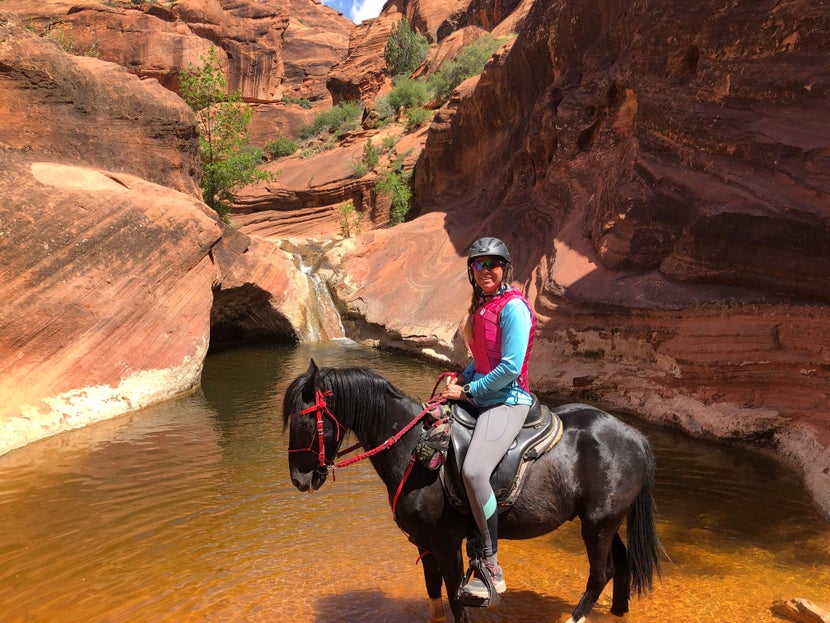
Q: What does your electrolyte program look like for multi-day rides?
A: Every horse is different, and it takes time to work out an electrolyte program for each one. For all of my horses, I make sure to salt their food at least a week before a ride. My usual electrolyte is a 1:1 ratio of Endura-Max and Kaolin Pectin mixed in a blender and then loaded into a "one dose" 60cc syringe. The day before we travel, I will give each horse one syringe to preload. Then the night before the ride, I'll give one syringe. Right before the ride starts, I give one syringe.
Now, this is where I might change things up. Brave (my big saddlebred gelding) and Flash (the tiny hackney pony) are actually on a pretty similar protocol; they receive one syringe every 10 to 15 miles, depending on the heat and always after they've drank. This will continue all day long. On the other hand, my saddlebred mare Coco gets half a syringe halfway through the ride and that's it! She isn't a heavy sweater; I joke that she's a camel, because she never passes up water even if there are streams a mile apart! You have to work a system around the horse you've got.
Q: What items do you bring on the ride with you in your saddlebags?
A: I try to bring the minimum: one water, one sports drink, a few snacks like jerky, peanut butter crackers, a nut mix, and some candy. I usually carry two or three syringes of electrolytes (you never know when the tip will break and spill everywhere), as well as an extra hoof boot. I have tie strings and carry rain gear or jackets, depending on the weather. I also carry a leatherman multi-tool, which I've used often.
Q: What are your trailer essentials, especially when traveling long distances for a multi-day ride?
A: I bring plenty of hay/pellets because I never want to get stranded and run out of food for the horses! A good spare tire and the tools to change it are necessary. For the horses: always an extra lead rope and halter, an extra saddle pad, girth, bridle, spare horse boots, fly spray, fly masks, and blankets! I don't care if I'm going to a hot ride—I always take a cooler and a waterproof blanket. You never know if the weather will change, or if your horse will struggle and get chilled.
| Shop All Electrolyte Horse Supplements |
Horse Trailer Travel
Q: Depending on the distance you're trailering, how far in advance do you arrive prior to the ride?
A: If I have to travel longer than 6 hours, then I like to arrive a day early. For example, I drove 7 hours to City of Rocks, arrived Wednesday, and let the horses relax. I did some pre-riding on Thursday, then competed Friday, Saturday, and Sunday. For Mt. Carmel, which is only 1.5 hours away, I showed up Wednesday afternoon with time to pre-ride about 5 miles. I then rode Thursday, Friday, Saturday, and Sunday.
Q: What is your last-minute checklist before you hit the road back home?
A: The last thing I do before heading home is give the horses a good walk and offer a drink before loading them in the trailer!
Closing Thoughts
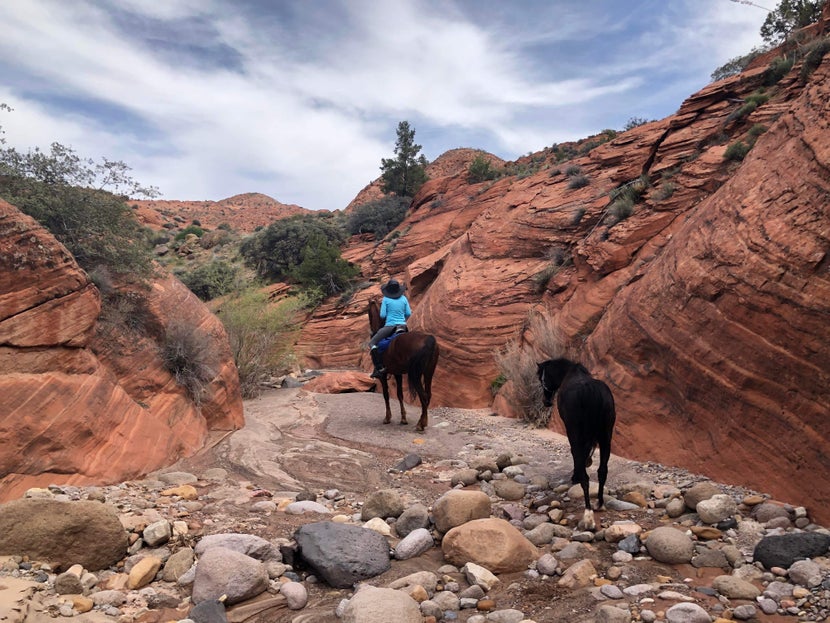
We appreciate you coming on this endurance journey with us and RW-sponsored rider Natalie Law. We hope you learned something new and feel more empowered to take on a multi-day endurance ride. Doing so takes blood, sweat, and tears, but it provides such a great sense of accomplishment! If you have any questions or concerns, please do not hesitate to reach out to our friendly customer service team at 1-800-620-9145 or info@ridingwarehouse.com. As always, happy riding!